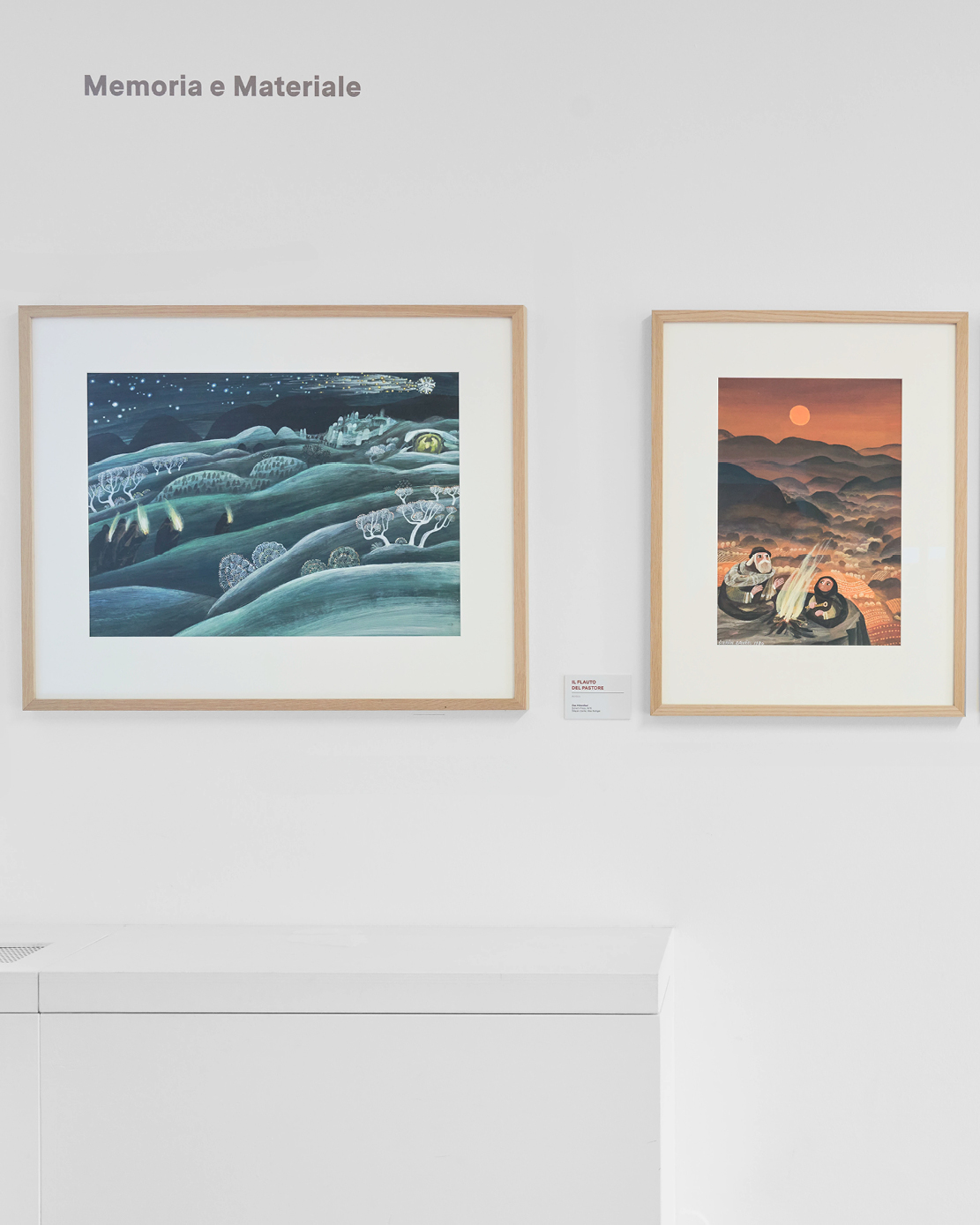From the two Italian masters of cut-out animation, Gianini and Luzzati, Štěpán Zàvrel learned the simplicity of movement in articulated limbs—arms and legs that bend—and the head in its four canonical positions: frontal, the two profiles, and the special, romantic one, bizarrely anti-perspectival, with the face turned upward. He mastered the art of simplifying facial features to their essence: two large Byzantine saint-like eyes, a straight vertical line for the nose, and a single soft horizontal stroke for the mouth (…).
As for the composition of his visions, systematically devoid of perspective, the most evident reference lies in Romanesque miniatures and Byzantine verticality. Horizontal images, usually spanning two pages, serve to present settings. Conversely, single-page illustrations, intended as narrative interludes, almost always adhere to a complete flattening of depth, reminiscent of pre-Gothic page layouts, rejecting spatial perspective. The image is ideally divided in half: the upper portion represents the distant, the lower the near; one side is dominated by the character, the other by the environment (…).
Štěpán Zàvrel’s favored themes consistently revolve around brotherhood, friendship, love for nature, and respect for the environment (…). Above all, a special mysticism of material poverty lingers in his work, understood almost as a synonym for spiritual wealth.
Text by Ferruccio Giromini


